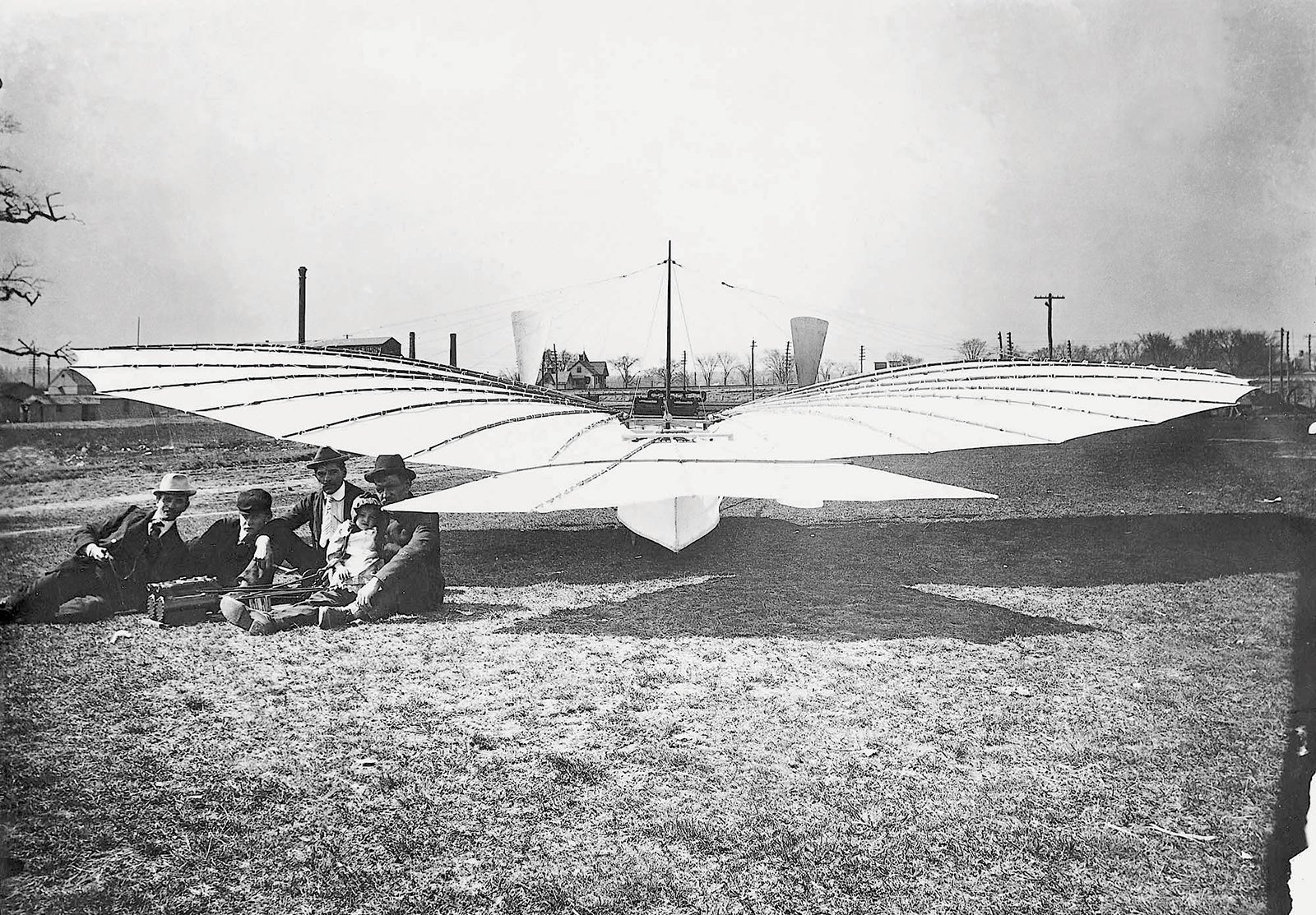Gustave Whitehead’s Flying Machines
Photo of Gustave Whitehead and his Whitehead Number 21 Glider from 1901. [1]
Gustave Whitehead was a German-born aviation pioneer that emigrated to the United States in 1893. He subsequently built and tested a number of flying machines, and some believe he achieved the first ever powered, controlled flight. As with most claims of this nature, it’s a difficult thing to prove and will most likely always have controversy surrounding it. Because of this, his machines and the alleged flights they took have a sense of mystery about them. To add to this mystery, Whitehead experimented with many different types of machines, including both manned and unmanned machines and both gliders and self-powered machines.
Whitehead’s most famous design is pictured above, called the Number 21. It’s a monoplane with ribbed wings and a broad tail. At the front were a pair of propellers powered by a small engine that Whitehead himself designed and built. According to Whitehead, on 18 August 1901, Number 21 successfully achieved a flight of roughly a half-mile and a height of 15 meters (50 feet). A few days later a local newspaper picked up the story and published an eyewitness account of the event.[2] This story was subsequently picked up and re-reported by a number of other publications. Unfortunately, this is the only evidence we have of Number 21 flying. The only photographs we have show the craft resting on the ground.
Patent drawings from 1908 showing an updated version of the Number 21 flying machine by Gustave Whitehead.
The story of the alleged flight of Number 21 is by far the most well-known story of Gustave Whitehead’s aviation oeuvre. Aside from this, however, he built and tested myriad other designs. Pictured below is one of them; a glider design from 1903. It’s a simple craft, with three stacked pairs of broad wings and a long pyramid-shaped tail behind it. The pilot would dangle between the bottom wings and control the flight by shifting his body weight. According to Whitehead, this glider was able to achieve sustained flight while being towed by a rope. Much like Number 21, however, there is doubt surrounding this claim. The photo below appears to show the glider in mid-flight, but this claim has been disputed.
Photo of Gustave Whitehead piloting his 1903 glider. There’s dispute over whether or not this photo shows a true flight.
A later design by Whitehead is pictured below. It’s an updated version of Number 21 with a larger wingspan and a long central body, with a hanging basket for the pilot below. It’s difficult to tell for sure, but I don’t see any propellers at the front, which suggests this is a glider. The photo shows it in mid-takeoff, with the front pair of wheels raised above the ground. It’s unclear whether or not this design successfully flew, but the machine itself is quite impressive.
Photo of Gustave Whitehead’s Albatross-type glider from 1903-1904.
By some accounts, Whitehead designed, built and/or tested over fifty different flying machines throughout his career. This is an impressive feat, and it illustrates just how committed to the pursuit of flight he was. Sadly, we only have documentation for a few of these. It goes to show how important it is to properly document these types of endeavors. This is especially true for major milestones of technology, like the world’s first flight. The Wright Brothers claim this title in the history books, but this is just based on the evidence we currently have. Perhaps there’s a photograph of Number 12 in mid-flight somewhere waiting to be re-discovered. Perhaps not. Regardless of the truth, Gustave Whitehead built an impressive fleet of flying machines throughout his career, and he rightfully takes his place among other aviation pioneers of his day.
Read more about other ideas for flying machines here.
[1] : Photo originally published in “A New Flying Machine.” Scientific American 84, no. 23 (8 June 1901): 357.
[2] : “Flying.” Bridgeport Herald (18 August 1901): 5.




